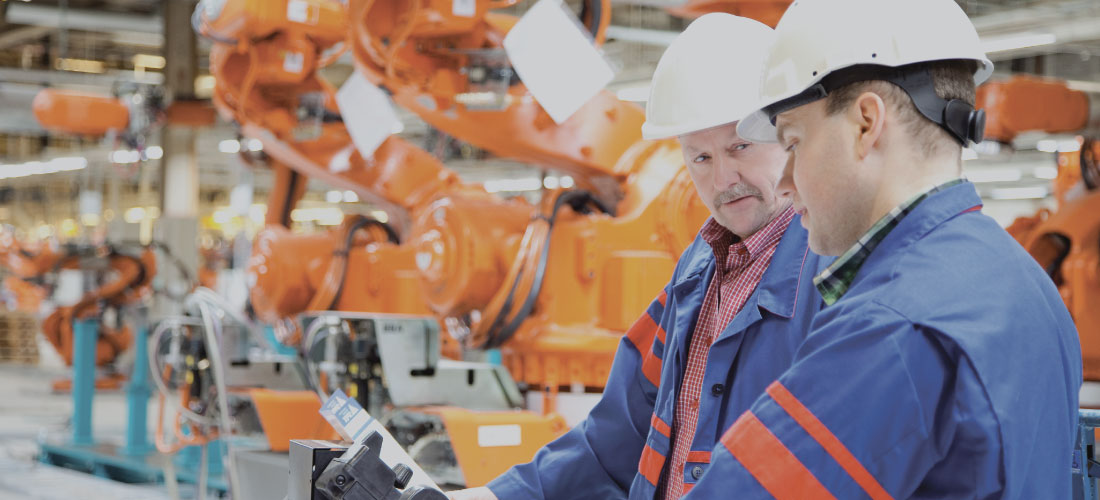
Share this Post
PUBLISHED
April 30, 2019
WRITTEN BY
Raphaela Mandel
The Fourth Industrial Revolution is upon us and the manufacturing industry is on the brink of the greatest change it has seen in over 100 years.
Known as Industry 4.0, the Fourth Industrial Revolution is providing manufacturers the opportunity to advance their technological capabilities using information technology (IT). This, in turn, gives manufacturers increased visibility into daily operations, high cost savings, and efficiency gains.
So, in the age of Industry 4.0, what can manufacturers expect to face in 2019? How can they adapt? How will these trends affect the industry as a whole?
Let’s start with the top 4 trends facing manufacturing in 2019:
1. Internet of Things (IoT)
According to a recent analysis by the Boston Consulting Group, the IoT market is set to reach $267 billion by 2020. This finding has prompted many manufacturers to embrace and drive advancements on the field and in the cloud.
63% of manufacturers believe tapping into IoT will increase profitability over the next five years, meaning they will be able to make more informed, strategic decisions using real-time data.
One significant piece of tech includes smart sensors. Smart sensors can convert data into different units of measurement, communicate amongst machines, record statistics, and feedback, and automatically shut down devices should a safety hazard arise.
IoT will allow manufacturers to make proactive safety decisions and swift movements should hazards arise.
2. Additive Manufacturing
Additive Manufacturing is known as the industrial version of 3-D printing where prototypes are built for engineers and designers before mass production. This form of technology has had its moment to shine in the light of everyday consumers; however, it’s within the manufacturing industry where it will have the biggest impact.
This technology allows teams to bring projects to life and analyze potential hazards or production issues – with one machine. It gives manufacturers the opportunity to have creative freedom without worrying about cost or time penalties.
It reduces waste by recycling plastic and cuts down on wait time for replacement parts or transportation. Additionally, it saves on energy costs. For example, the LEAP jet engine from GE and Snecma incorporates fuel nozzles printed with laser sintering. This piece is now made to be 25% lighter, five times more durable, and reduces fuel burn by 15%.
The implications of 3-D printing in the manufacturing industry are ten-fold. From reducing costs to increasing productivity on product lines, this innovation trend positively impacts future-proofing strategies for industry professionals.
3. Robotics and Wearable Technology
Robotic devices will have heightened abilities surpassing those of human abilities – especially in those unsafe for humans. These devices will be easier to use in the workplace with capabilities such as image and voice recognition. An advantage of these robotic devices is they are programmed to do exactly what they are tasked with, which decreases the potential for failure and accidents.
Wearable Technology, or more specifically exoskeletons, combine human abilities with the power of machines. Exoskeletons are worn by workers to allow powerful, yet precise, moves and prevent workers from enduring physical strain from difficult tasks.
President of Activelink Co., Ltd (Panasonic-owned company who develops exoskeletons), Hiromichi Fujimoto stated, “We are proposing robotics to help at [manual] worksites, because there will always be a certain level of work that must be done by people.”
These forms of wearable technology are meant to complement human workers, not replace them. The benefits of both forms of robotics are to increase outputs and product line efficiency. Additionally, robotics keep manufacturers safe as it decreases physical strain from strenuous tasks.
4. VR and AR
Virtual Reality (VR) and Augmented Reality (AR) are not just for video games. These two forms of technology are directly impacting the relationship between machine and worker for the better.
VR software interfaces can now seamlessly work in tandem with computer-aided designs to make modifications to products during the design stage. What does this mean? It means workers can spot design issues, make notes on physical and technological changes, and improve the workers’ sight line, enabling them to complete tasks faster.
AR devices such as electronic goggles or glasses, such as the Microsoft Hololens, can provide workers with computer-generated graphics and real-time assistance to perform tasks with safety in mind. It includes cameras and sensors for proper compliance and safety training. Workers are now able to safely perform tasks, use data to make corrective actions at the tip of their fingers, or, their eyes.
These trends are amongst many others in the industry. As 2019 progresses, the manufacturing industry is moving swiftly to adapt. As they continue to apply newer forms of technology, they will have the ability to future-proof their strategies to safely increase their outputs.
Without adaptation, the manufacturing industry could face a tumultuous battle where they could fall behind technological advancements and potentially fold due to low productivity.
The manufacturing industry is on the brink of something revolutionary and it’s up to us to embrace it, understand it, and face it head-on – safely.
Find Out How eCompliance Helped Zip Signs Achieve COR Certification.
READ CASE STUDY →